Cervical spinal stenosis can cause severe discomfort, including neck pain, arm weakness, and numbness. If you’re seeking effective, affordable treatment, Mexico offers world-class hospitals and experienced neurosurgeons to help you regain your quality of life. Our dedicated team is here to guide you through the entire process, from diagnosis to recovery, ensuring you receive the best care possible at a fraction of the cost compared to other countries.
Based on +500 Reviews
Cervical spinal stenosis is a condition where the spinal canal in the neck becomes narrowed, putting pressure on the spinal cord and nerves. This narrowing can occur due to age-related changes, such as the thickening of ligaments or the development of bone spurs, which can cause pain, numbness, and weakness in the neck, arms, and hands. In severe cases, it can lead to difficulty with balance and coordination. Early diagnosis and treatment are essential to manage the symptoms and prevent further complications.
Cervical spinal stenosis, a condition where the spinal canal in the neck region narrows, can lead to various symptoms. The narrowing puts pressure on the spinal cord and nerve roots, causing discomfort and other issues. Common symptoms include neck pain, which may be sharp or burning, and pain that radiates to the arms, shoulders, and hands. Many patients also experience numbness or tingling sensations in their extremities, along with weakness or stiffness in the neck. This can make it difficult to perform everyday tasks or even turn the head. In more severe cases, cervical stenosis can affect balance and walking, causing a feeling of unsteadiness. If you experience any of these symptoms, it is crucial to consult a healthcare professional for diagnosis and treatment. Early intervention can help alleviate discomfort and prevent further complications.

As people age, the spine naturally undergoes wear and tear. The discs between vertebrae lose hydration and elasticity, causing them to shrink and bulge. This can narrow the spinal canal, leading to cervical stenosis.

A herniated disc occurs when the soft inner portion of the disc pushes out through a crack in the outer layer. This can press on nearby nerve roots and the spinal cord, contributing to the narrowing of the cervical canal.

Over time, the ligaments that hold the vertebrae together can become thicker and less flexible. This thickening can reduce the space available for the spinal cord and nerve roots, leading to stenosis.

Bone spurs form when the bones in the spine start to grow in response to degenerative changes, such as arthritis. These bony outgrowths can protrude into the spinal canal and compress the spinal cord or nerves.

Trauma to the neck, such as fractures or dislocations, can cause damage to the vertebrae and surrounding tissues. This damage may lead to a narrowing of the spinal canal and result in cervical spinal stenosis.
Mexico offers a unique combination of high-quality healthcare and cost-effective solutions for cervical spinal stenosis treatment. With highly skilled surgeons, internationally accredited hospitals, and advanced medical technology, you can trust that your condition will be treated with the utmost care. Enjoy personalized support throughout your treatment journey, ensuring a smoother, stress-free experience from start to finish.
We partner with state-of-the-art hospitals in Mexico equipped with advanced technology and facilities designed for optimal patient care and safety.
Our team includes highly skilled neurosurgeons with years of experience specializing in lumbar disc hernia surgeries, ensuring precision and successful outcomes.
Receive world-class surgical care at a fraction of the cost compared to the U.S., with transparent pricing and no compromise on quality.

Book your consultation, either in person or via Zoom, to discuss your symptoms and medical history.

Our specialists will evaluate your condition and provide a personalized diagnosis and surgical planning if needed.

We handle all your travel needs, including visas, airport pick-ups, and accommodations, ensuring a seamless and stress-free journey.

Undergo your surgery with our expert neurosurgeons, followed by dedicated care for a smooth recovery.
Take a quick test to understand your possible condition and explore treatment options available to you.
Get quick answers to your most common questions about lumbar spinal stenosis treatment in Mexico. From understanding the condition to the benefits of traveling abroad for surgery, we’ve got you covered with the key details you need to make an informed decision about your treatment.
Cervical spinal stenosis is a relatively common condition, especially in individuals over the age of 50. It results from the natural wear and tear of the spine, but can also be caused by certain conditions like arthritis, disc herniation, or injury.
Yes, many patients with cervical spinal stenosis can benefit from non-surgical treatments like physical therapy, medications, and steroid injections to relieve pain and improve mobility. Surgery is typically considered only when conservative treatments fail.
While surgery for cervical spinal stenosis is generally safe, like any procedure, it carries some risks, including infection, nerve damage, or complications related to anesthesia. However, most patients experience significant relief from their symptoms after surgery.
Recovery time varies, but most patients can expect to return to light activities within a few weeks. Full recovery may take several months, depending on the type of surgery and the patient’s overall health.
If conservative treatments such as physical therapy, medications, and injections do not relieve your symptoms, or if your condition worsens over time, your doctor may recommend surgery. A thorough evaluation will help determine the best course of action.
Overall Rating 4.9 / 1463 reviews




Overall Rating 4.9 / 1463 reviews




Payment can be made at your arrival.